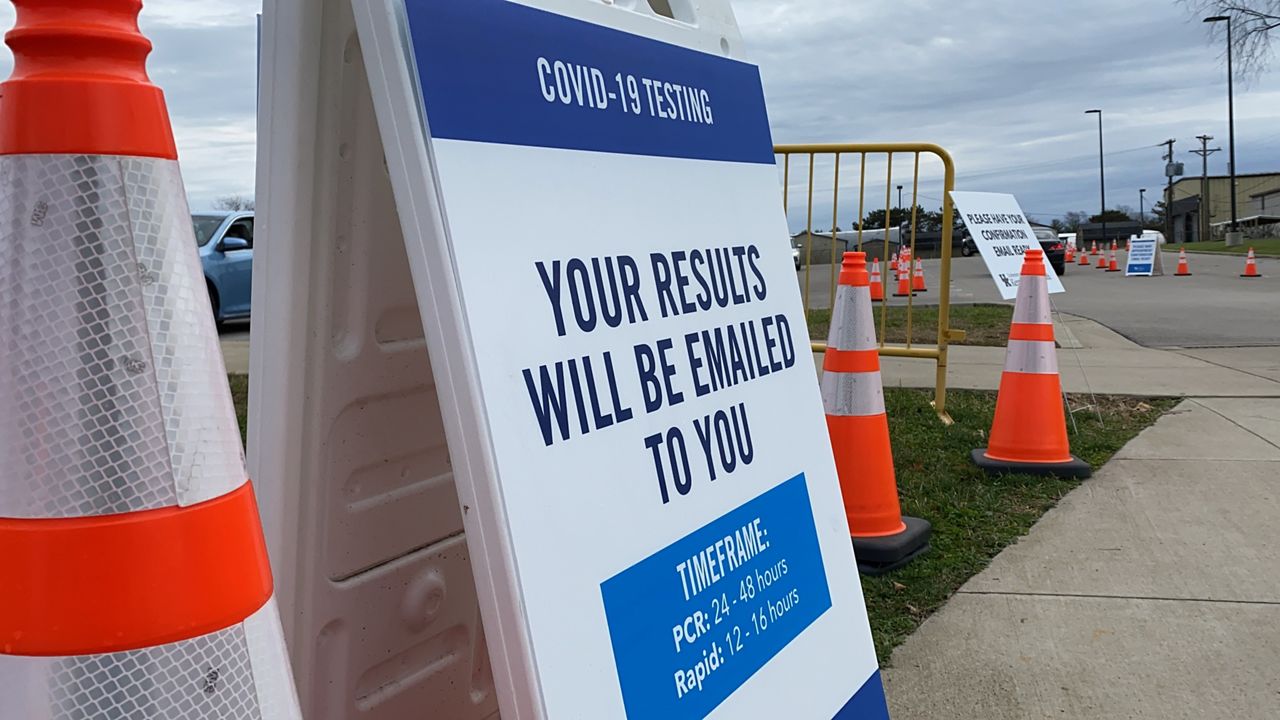LOUISVILLE, Ky. — On the first day of February, after over two weeks of declining COVID-19 cases in Louisville, the “worst of the omicron wave is likely behind us,” Dr. Sarah Beth Hartledge, Associate Medical Director of Louisville’s Public Health Department, said Tuesday.
The past seven days have seen 12,213 new COVID cases in Louisville, compared to roughly 14,000 last week and 16,000 the week before that.
“We are on the downside of the omicron wave, but we do still have significant impacts in the community,” Hartledge said, citing the 467 patients hospitalized with COVID-19 in Louisville and the 39 new deaths reported last week.
Those death numbers could also continue to rise, even as the number of COVID cases falls, though the spike may be less severe than it has been with previous COVID waves.
“We were very lucky and grateful that the omicron wave in general was a less severe infection for many people” Hartledge said. She said Louisville is currently “climbing the curve” when it comes to deaths, with last week’s 39 reported COVID deaths more than the two previous weeks combined. “Hopefully, we’ll start seeing that decline,” she said.
In recent weeks, global concern over a sub-variant of omicron, dubbed BA.2, has picked up as it has accounted for a growing number of cases in places such as Denmark. While BA.2 is circulating in nearly half of the United States, according to some reports, it’s difficult to know the saturation because it's difficult to detect.
“It is a little more difficult to identify it in testing as being BA.2,” Hartledge said. “We don’t have any completely confirmed cases here in Jefferson County yet, but likely we do have some circulating.”
One place to look is the city’s wastewater, which is regularly tested by UofL researchers to revel early signs of how much COVID is spreading in the city. Hartledge said Louisville “definitely” has BA.2 in its wastewater.
The rapid spread of the omicron variant has led to some optimism that the variant could help COVID transition from an emergency to an ever-present, but less serious, concern. Between the vaccinated and those who’ve contracted and recovered from COVID, immunity to the virus will be higher than ever after the omicron wave, experts say.
“People will continue to get infected, will continue to get ill, but we would like to see that number at a more stable background number,” Hartledge said about what the end of the pandemic could look like.
Mayor Greg Fischer said the goal is to get to a place where we’re managing COVID much like the flu. But he cautioned: “We don’t know when we’re going to get there.”
Some experts have warned that the level of infection that omicron has achieved will allow it to mutate more than previous variants, potentially leading to new, more virulent variants. Another issue standing in the way is global vaccine inequity, which has been blamed for the emergence of the omicron variant and could be responsible for another.



